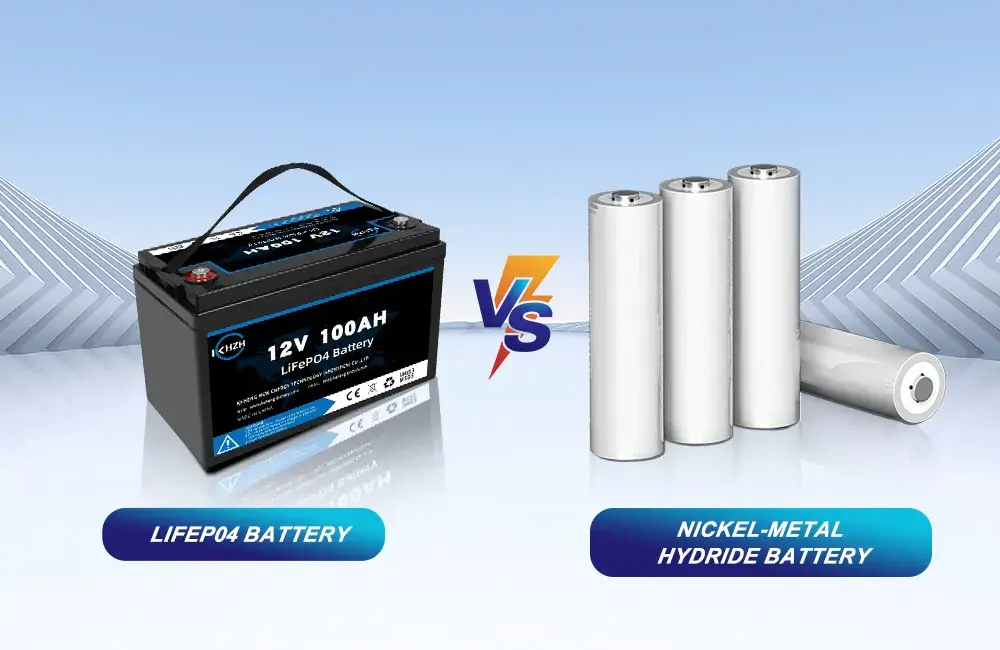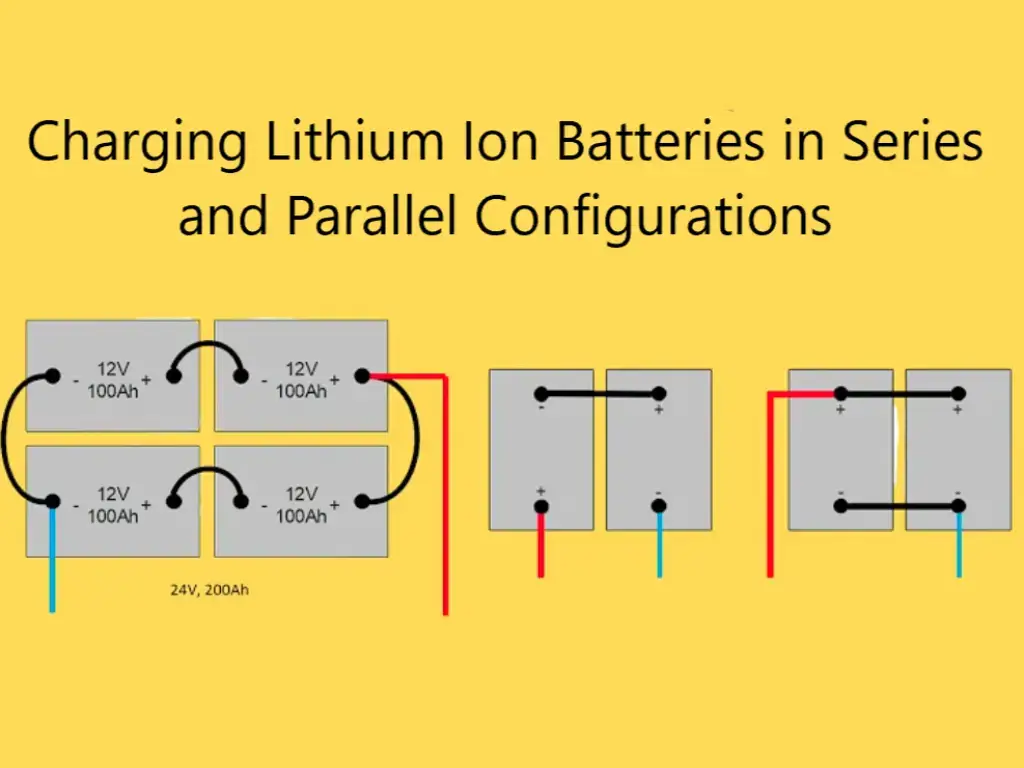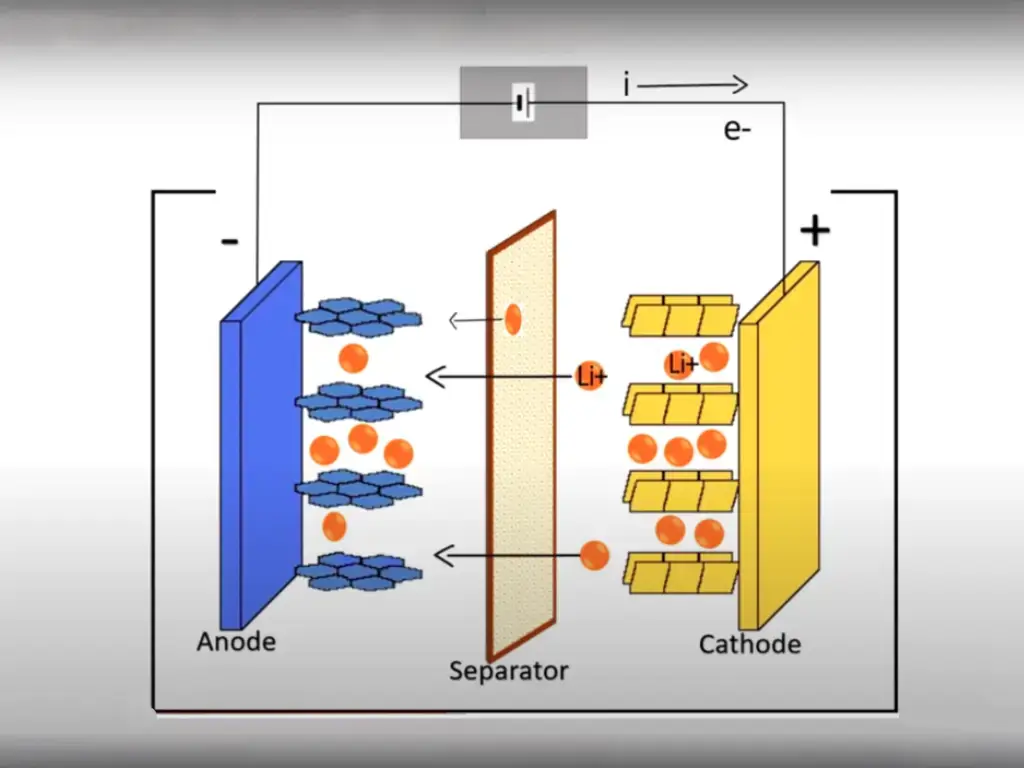Introduction
Lithium-ion and Nickel-Metal Hydride Batteries

Two prominent players in the realm of rechargeable batteries are Lithium-ion (Li-ion) and Nickel-Metal Hydride (NiMH) batteries. These technologies have gained widespread adoption due to their unique characteristics and applications.
Lithium-ion batteries are known for their high energy density, lightweight design, and fast-charging capabilities, making them ideal for portable electronic devices such as laptops and smartphones. On the other hand, Nickel-Metal Hydride batteries offer a more environmentally friendly alternative to older battery chemistries like Nickel-Cadmium, with higher energy density and lower toxicity levels.
The choice between Lithium-ion and Nickel-Metal Hydride batteries often depends on specific requirements such as energy storage capacity, lifespan, cost-effectiveness, and environmental considerations. Understanding the differences between these two battery types is essential for selecting the most suitable power source for a particular application.
As we delve deeper into the intricacies of Lithium-ion vs. Nickel-Metal Hydride batteries, we will uncover their strengths, weaknesses, and real-world implications in shaping our technological landscape.
Lithium-ion Batteries
The Inner Workings Unveiled
The composition and structure of lithium-ion batteries are intricately designed to provide efficient energy storage and release. At its core, a lithium-ion battery consists of three main components: a cathode, an anode, and an electrolyte. The cathode is typically made of a metal oxide, such as lithium cobalt oxide or lithium iron phosphate.
On the other hand, the anode is commonly composed of graphite that can intercalate lithium ions during charging. These components are separated by a permeable membrane soaked in a liquid electrolyte solution that facilitates the movement of ions between electrodes during charge/discharge cycles.
Advantages
Lithium-ion batteries boast several advantages that make them highly desirable for various applications. One key benefit is their remarkable energy density, enabling them to store more power per unit mass or volume compared to alternative battery technologies. Additionally, their lightweight and compact design make them ideal for portable electronics where space is limited.
Furthermore, lithium-ion batteries exhibit a low self-discharge rate, meaning they retain their charge over extended periods without significant loss—a crucial feature for devices with infrequent use. Their fast charging capabilities further enhance user convenience by minimizing downtime between charges.
Navigating Safety Concerns and Lifespan Limitations
Despite their numerous advantages, lithium-ion batteries are not without their drawbacks. One notable concern revolves around safety issues related to overheating and fire risk due to potential thermal runaway events caused by factors like overcharging or physical damage.
Manufacturers implement safety features like internal circuitry safeguards and flame-retardant materials to mitigate these risks but ongoing vigilance is necessary. Additionally, another limitation lies in their finite lifespan characterized by gradual capacity degradation over repeated charge/discharge cycles—a factor that prompts periodic replacement in long-term applications such as electric vehicles.
History and Development of Nickel-Metal Hydride Batteries
Nickel-Metal Hydride (NiMH) batteries have a rich history that traces back to the late 1980s when they were first introduced as a promising alternative to the widely used Nickel-Cadmium (Ni-Cd) batteries. The development of NiMH batteries was primarily driven by the need for a more environmentally friendly and higher energy density rechargeable battery option.
Through continuous research and innovation, NiMH batteries have evolved over the years, leading to improvements in their performance, safety, and efficiency. The commercialization of NiMH batteries gained significant momentum in the early 1990s when they started being utilized in various consumer electronics such as digital cameras, laptops, and cordless power tools.
Since then, NiMH batteries have become increasingly popular due to their superior characteristics compared to Ni-Cd batteries, including higher energy density, lower self-discharge rate, and reduced toxicity. The ongoing advancements in battery technology continue to push the boundaries of what NiMH batteries can achieve in terms of efficiency and sustainability.
Composition and Structure of Nickel-Metal Hydride Batteries
NiMH batteries consist of a positive electrode made of nickel oxyhydroxide (NiOOH), a negative electrode typically composed of an alloy containing rare-earth metals and nickel (often referred to as AB5), and an alkaline electrolyte solution such as potassium hydroxide (KOH). The electrodes are separated by a porous membrane that allows for the flow of ions between them during charging and discharging cycles. The overall construction of NiMH batteries is designed to facilitate the reversible electrochemical reactions that occur within them, enabling efficient energy storage and release.
The structure of NiMH batteries is characterized by their cylindrical or prismatic shape, depending on the application requirements. These batteries are sealed with leak-resistant casing to prevent electrolyte leakage and ensure safe operation.
The internal components are arranged in a compact manner to maximize energy density while maintaining structural integrity. The design considerations for NiMH batteries focus on achieving optimal performance parameters such as capacity, voltage output, cycle life, and thermal stability.
Advantages and Disadvantages of Nickel-Metal Hydride Batteries
– Higher Energy Density than Ni-Cd Batteries: NiMH batteries offer improved energy storage capacity per unit volume compared to traditional Nickel-Cadmium counterparts. – Lower Self-Discharge Rate: NiMH batteries exhibit minimal self-discharge over time, making them suitable for devices that require long-term power retention. – Lower Toxicity Compared to Ni-Cd Batteries: With reduced cadmium content in their composition, NiMH batteries are considered more environmentally friendly alternatives with lower toxic impact during disposal. Disadvantages:
Lower Energy Density Compared to Lithium-Ion: Despite advancements in technology, NiMH battery’s energy density still falls short when compared with Lithium-Ion cells.
Higher Self-Discharge Rate Than Lithium-Ion: While lower than some other rechargeable Battery types like Lead-Acid or nickel-cadmium alternatives.
Shorter Lifespan Compared To Lithium-Ion: Generally speaking, The longevity potential offered by Li-ion technology surpasses that provided by Nickel-Metal Hydride configurations.
Lithium battery pros and cons
Pros:
- Higher energy density: Lithium-ion batteries can store more energy in a smaller and lighter package, making them ideal for portable electronic devices.
- Longer lifespan: These batteries can be recharged and used for a longer period before needing replacement, making them cost-effective in the long run.
- Faster charging: The fast-charging capability of lithium-ion batteries is beneficial for modern, on-the-go lifestyles, allowing for quick recharges when needed.
- Extended charge retention: Lithium-ion batteries can hold a charge for extended periods, making them suitable for emergency equipment and backup power supplies.
Cons:
- More expensive: Lithium-ion batteries tend to be more costly compared to other types of batteries, which can impact the overall cost of electronic devices.
- Risk of overheating and fire: There is a potential risk of overheating and fire associated with lithium-ion batteries, especially if they are not handled or stored properly, requiring cautious handling and storage.
Comparing Energy Density and Cycle Life
The Battle of Energy Storage
When comparing Lithium-ion and Nickel-Metal Hydride batteries, one crucial aspect to consider is their energy density. Lithium-ion batteries have a higher energy density compared to Nickel-Metal Hydride batteries, meaning they can store more power per unit mass or volume.
This advantage makes Lithium-ion batteries ideal for devices where lightweight and high performance are essential, such as in smartphones, laptops, Lithium Rv Battery、Lithium Golf Cart Batteries、Lithium Marine Batteries、Electric Outboard Motor. On the other hand, Nickel-Metal Hydride batteries have a lower energy density but still offer a decent balance between capacity and weight, making them suitable for applications like power tools and hybrid vehicles.
Unveiling the Cycle Life Mystery
Cycle life refers to the number of charge/discharge cycles a battery can undergo before its capacity significantly decreases. In this aspect, Lithium-ion batteries outshine Nickel-Metal Hydride batteries. Lithium-ion batteries can endure hundreds to thousands of cycles without much degradation in performance, making them long-lasting and cost-effective in the long run.
Conversely, Nickel-Metal Hydride batteries have a shorter cycle life compared to their lithium counterparts. This limitation means that Nickel-Metal Hydride batteries may need more frequent replacements over time, impacting both convenience and sustainability.
Conclusion
In the realm of energy storage solutions, both Lithium-ion and Nickel-Metal Hydride batteries offer unique advantages and drawbacks that cater to different needs across various industries. While Lithium-ion excels in energy density and cycle life longevity, Nickel-Metal Hydride provides a balance between performance and cost-effectiveness. Understanding these differences allows us to make informed decisions when selecting the right battery technology for specific applications.
Despite their contrasts, both technologies contribute significantly to advancing clean energy initiatives and enhancing our everyday lives with reliable power sources. Embracing these innovations fosters a brighter future where sustainable energy solutions continue to evolve for the betterment of society as a whole.
FAQs: Lithium-ion and Nickel-Metal Hydride Batteries
What are the advantages of lithium-ion batteries?
Lithium-ion batteries offer higher energy density, longer lifespan, and faster charging capability, making them ideal for portable electronic devices such as smartphones and laptops.
What are the disadvantages of lithium-ion batteries?
Lithium-ion batteries tend to be more expensive compared to other types of batteries and there is a potential risk of overheating and fire associated with them.
What are the advantages of Nickel-Metal Hydride batteries?
Nickel-metal hydride (NiMH) batteries are lower in cost, considered to be safer than lithium-ion batteries, and more environmentally friendly.
What are the disadvantages of Nickel-Metal Hydride batteries?
NiMH batteries have lower energy density compared to lithium-ion batteries, resulting in shorter battery life and reduced performance in devices. They also generally have a shorter lifespan compared to other battery types.
What factors should be considered when choosing between lithium-ion and nickel-metal hydride batteries?
Factors to consider include the specific power requirements of the device, the need for fast charging, and the overall lifespan of the battery. Ultimately, the choice will depend on the specific needs and priorities of the user.





1 thought on “Unveiling the Battle Between Lithium-ion and Nickel-Metal Hydride Batteries”
Also, the more electricity you use, the more you save. Let’s say you use a lot of electricity and you need 3 7 kWh Tesla batteries at a cost of $6640+$3000+$3000 = $12,640. California kicks in incentives, bringing it down to $5,056. Then you charge 21/0.87 = 24.14 kWh worth of electricity at $0.10 per kWh for a total cost of $2.41, and then you sell back to the grid 21 kWh worth at $0.40 per kWh or $8.40 total. So the gross profit is $5.99 per cycle. The lifetime is 5000 cycles (5000*5.99 = $29,950), so you saved $29,950-$5056 = $24,894 over 10-15 years.